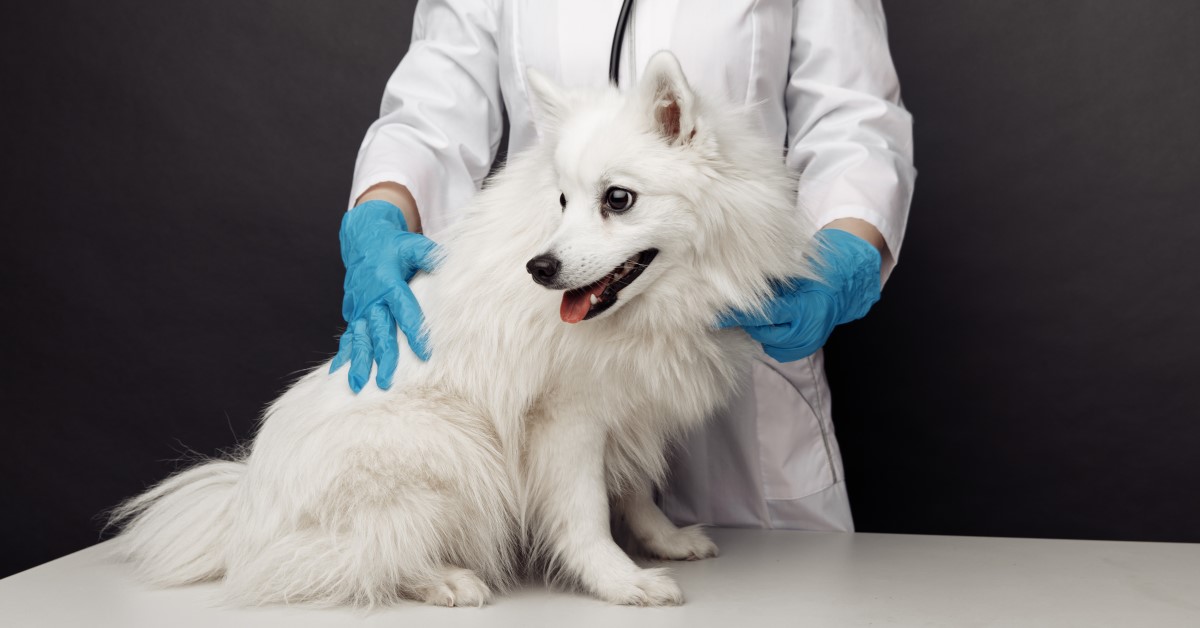Reasons to Get Your Dog Tested for Diabetes
5 Reasons to Have Your Dog Tested for Diabetes

Diabetes mellitus is a medical condition that affects the amount of glucose, or sugar in the blood. While diabetes is commonly associated with humans, dogs too can develop this chronic disease. In fact, an estimated 1 in 300 dogs will develop diabetes in their lifetime, according to VetSource.
When your dog eats, carbohydrates are converted into simple sugars, such as glucose. Glucose is then absorbed from the intestines into the blood, where it travels to cells that use it for energy production. When dogs do not make enough insulin or stop producing it completely, glucose cannot enter the cells. Instead, glucose builds up in the blood, a condition known as hyperglycemia.
Cells that are “starved” of glucose fail to function normally. Over time, symptoms like weight loss and increased thirst can develop. The primary cause of canine diabetes is unknown, and there is currently no cure; however, diabetes can be treated and controlled. If your dog is showing signs of diabetes, it is important to have him tested.
Common Symptoms of Canine Diabetes
Diabetes is a complex disease that most often develops in older dogs. Similar to human diabetes, canine diabetes can cause a range of unpleasant symptoms. As some of these symptoms can mimic other health conditions, it’s important to have your pet examined by a vet before developing a treatment plan.
Some common symptoms of diabetes in dogs include:
- Increased Appetite – Diabetes causes the body to suffer from a lack of energy from glucose and relies on alternative energy sources like fat and protein. When cells do not absorb adequate glucose, they essentially “starve,” causing your pet to have an increased appetite.
- Excessive Thirst – In addition to an increased appetite, dogs with diabetes often struggle with excessive thirst. Your dog may drink frequently and empty his water bowl often. This is caused by the kidneys having to work overtime to filter and absorb the excess glucose.
- Weight Loss – Despite many dogs with diabetes having an increased appetite, your pet may lose weight. When the body cannot get adequate glucose into the cells, it starts to burn fat and muscle for energy. This can result in a visible reduction in body weight.
- Frequent Urination – Dogs with diabetes often need to urinate more frequently and may even start to have “accidents” in the house. This is caused by a combination of factors, such as increased thirst that forces your dog to drink more. The body also tries to get rid of excess sugar by sending it out with urine.
In advanced cases of canine diabetes, symptoms will often become more pronounced and may include lack of energy, loss of appetite, depressed behavior, and vomiting.
Why Dogs Should Be Tested for Diabetes
1. Diabetes Can Be Hard to Spot
Despite the various symptoms that dogs often exhibit with diabetes, this condition often goes undetected. The early signs of canine diabetes can be hard to recognize, especially when symptoms are mild, such as subtle increases in water intake. In older dogs, changes in attitude or behavior are often attributed to the natural aging process. Regular diabetes screenings can help catch the condition in its early stages.
2. Early Diagnosis Can Extend Your Pet’s Lifespan
With proper care and disease management, dogs with diabetes can live happy lives with minimal symptoms. Dogs who are given insulin may not suffer from a shortened lifespan. However, dogs can become very ill when their diabetes is not regulated. According to Dr. Ellen Behrend, VMC, Ph.D., DACVIM, the median survival rate is two years. Most dogs that do pass from diabetes tend to have other conditions that complicate treatment or cause them to get sick
3. Pet Owners Can Save Money
Managing canine diabetes can be a costly endeavor. Treatment for diabetes in dogs often consists of multiple insulin treatments a day, as well as the cost of insulin syringes, special foods, and frequent vet visits for blood tests. Diabetic dogs also cannot go without their insulin, meaning you may need to hire a pet sitter while you’re away. Having your dog tested for diabetes can sometimes help catch the condition in its pre-diabetic stage. Diet monitoring and weight loss may help ward off the disease.
4. You Can Help Save Your Dog’s Eyesight
Canine diabetes can cause cataracts and ultimately blindness without treatment. According to Today’s Veterinary Nurse, 75 percent of dogs will develop blindness within one year of a cataract diagnosis. Excess sugar in the body can have secondary effects on the lens of the eye, forcing water into the lens, which distorts vision. Although cataract surgery can be performed, this procedure is costly
5. You’ll Have Reassurance of Your Dog’s Health
Pet owners want to know that their dogs are happy and healthy. As dogs cannot verbally explain their symptoms or express how they’re feeling, it’s important for pet owners to look for red flags that could indicate a health problem. Undergoing annual exams and routine blood work can provide pet owners with peace of mind.
If your dog has been showing symptoms of diabetes or you suspect that he may have diabetes, speak with your vet about your concerns. Treatment for canine diabetes is typically a combination of insulin injections, exercise, and diet to help stabilize their blood glucose.
Ready to start saving money on pet wellness care?
Then take a look at Mint Wellness, the pet wellness plan that provides fast reimbursement on routine pet care. Save on vaccinations, wellness exams, preventatives, dental, and more!
Learn More


